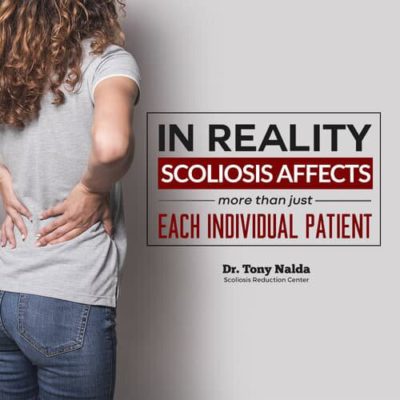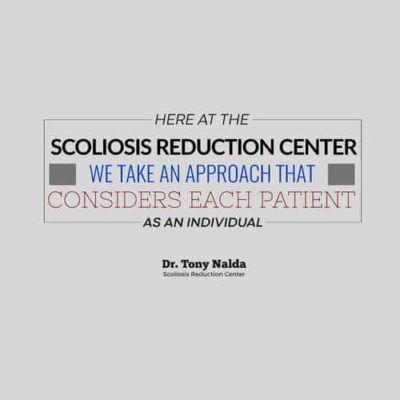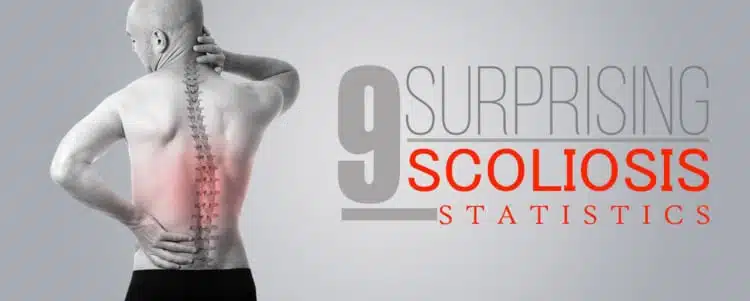I believe the best way to understand scoliosis is on a patient-by-patient basis. Each individual is unique, and there are no two scoliosis cases that are exactly alike. Every spine tells its own story, and every patient has their own distinct relationship with the condition. Nevertheless, I think it can be useful to take a broader view of scoliosis from time to time in order to understand the big picture.
In reality, scoliosis affects more than just each individual patient. It affects parents, family members, friends, teachers, coaches and our entire society.
4 Key Takeaways
- High Number of Surgeries: With approximately 29,000 adolescent scoliosis surgeries performed annually in the U.S., highlighting the physical and emotional impact of these procedures on young patients.
- Significant Costs Involved: The substantial financial burden of scoliosis, with hospital stays averaging $92,000 for children and double the national average for adults, underscores the need for affordable treatment alternatives.
- Emotional and Physical Impact: The condition’s deep emotional effects, including increased rates of suicidal thoughts among patients, and the prevalence of back pain, significantly affect the quality of life.
- Need for Comprehensive Care: A gap in communication with healthcare professionals and the multifaceted nature of scoliosis management points to the importance of holistic, patient-centered approaches in treatment planning.
To help you understand the impact that scoliosis has in our world, here are some surprising statistics that will help you put the condition into perspective.
#1 — 29,000 Adolescent Surgeries Each Year
Every year in the United States alone, approximately 29,000 scoliosis surgeries are performed on adolescent patients.

Think about that for a moment: 29,000 annual surgeries every year breaks down to an average of nearly 80 surgeries per day — and three every hour! When you consider the cost of surgery and the impact it can have on an adolescent’s life, this number is staggering. That’s a lot of money and a lot of big changes in the lives of young people and their families.
#2 — $92,000 for a Child’s Hospital Stay
On average, it costs $92,000 for a child with scoliosis to stay in the hospital.
This number is just the average amount for a child’s hospital stay when they have scoliosis. In many cases, that figure can rise well above $100,000. This amount is even more surprising when you consider that the national average cost for a child’s hospital stay (for all conditions) is $17,500.
#3 — Twice the Average Hospital Charge
For adults with scoliosis, the average hospital charge is approximately double the national average.
The average three-day hospital stay for an adult in the United States costs $30,000, according to healthcare.gov. A scoliosis patient can expect to pay $60,000. That’s hugely significant. In fact, scoliosis alone accounts for 1.2% of all hospital charges each year.
Also, consider the fact that adults with scoliosis are more likely to need long-term medical care than those without the condition. If hospital stays are involved, the costs associated with scoliosis in adults can rise dramatically.
#4 — Emergency Room Scoliosis Treatment Is More Common than You Might Think
Every year in the U.S., children with scoliosis make 17,500 emergency room visits, and adults with scoliosis make 74,000 visits.
That’s more than 90,000 emergency room visits each year from scoliosis patients alone. Break it down by week, and the number is over 1,750. By day, it’s more than 250. Wow. And as you know, costs associated with emergency room visits can be astronomical.
#5 — Annual Nonsurgical Costs Up to $14,000
According to estimates, direct costs of nonsurgical care for adults with scoliosis can be as high as $14,000. This number does not include the loss of wages or time from work.
When considering the costs associated with scoliosis treatment, it’s natural to single out surgical expenses. But other costs add up in a big way, too.
#6 — A Communication Breakdown
90% of scoliosis patients would like more opportunities to discuss their feelings with healthcare professionals.
Scoliosis is more than just a mechanical issue of the spine. It affects patients emotionally, as well, but only 5% of people with scoliosis say they have had the opportunity to discuss their feelings with doctors or other healthcare providers. The vast majority of patients don’t feel like they have adequate communication opportunities with the people they are counting on to help them heal.
#7 — Severe Emotional Effects
Scoliosis patients are 40% more likely to have experienced suicidal thoughts.
Speaking of emotional effects of scoliosis, they can be quite serious and potentially severe. Patients with scoliosis are more likely to experience suicidal thoughts, which is very troubling. They are also more likely to be concerned about abnormal body development and the strain their condition may have on relationships with their peers.
#8 — Scoliosis and Back Pain
73% of individuals with scoliosis report experiencing back pain in the previous year. Only 28% of people without scoliosis report back pain.
Scoliosis does not always lead to back pain, but back pain is much more common in people with the condition than in the general public. When people experience back pain, their lives are impacted negatively in multiple ways: they are unable to experience a normal range motion, they cannot participate in numerous activities they enjoy and they become limited in terms of their ability to maintain rich and fulfilling social lives.
#9 — “Horrible” and Continuous Pain
Scoliosis patients are twice as likely to report continuous pain as patients without scoliosis. Additionally, 23% of those with scoliosis report pain levels described as “distressing,” “excruciating” or “horrible,” compared to 1.4% of people who do not have scoliosis.
Let this one sink in. Physical pain is one of the most challenging aspects of life, and people with scoliosis experience it more frequently, continuously and horribly than those without scoliosis. When you consider that more than four million people in the United States alone have scoliosis, there are a lot of people out there who live in pain. The effect all this pain has on society should not be taken lightly.
Improving Scoliosis Statistics One Patient at a Time

The surprising statistics I have cited here may be alarming, or they may simply seem like everyday reality if you or a loved one lives with scoliosis. Regardless of how these facts make you feel, it is crucial to know that efforts are being made to improve these statistics and — most importantly — enhance the lives of people with the condition.
Here at the Scoliosis Reduction Center®, we take an approach that considers each patient as an individual, which is why we experience such positive results from our treatments. We cannot cure scoliosis, but we can reduce its impact significantly and help to reduce abnormal curvatures. Our results speak for themselves!
To learn more, please call us today at 321-939-2328.





